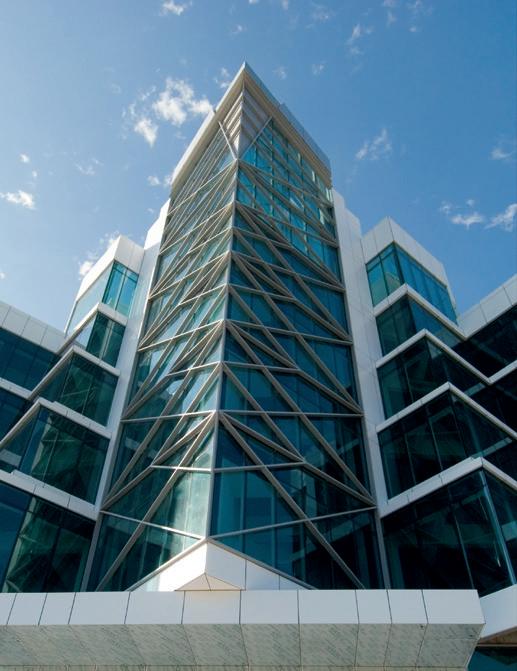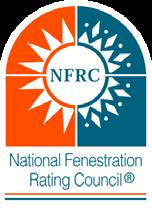CONCEPT WALL 50 Unlimited


CW 50 is a façade and roof system that offers unlimited design freedom and allows maximum transparency. As such, CW 50 meets all requirements of contemporary architecture. Innovative solutions contribute towards the tendency of big, heavy, and thick glass panes. CW 50 supports up to 1,540 lbs in various glass support configurations- even more glass weight can be offered in bespoke solutions. The system is available in several designs and glazing variants, like steel beam look, standard pressure plates, structurally glazed, and structurally clamped solutions. Specified levels of fire-resistance, burglar-proof classes, and thermal insulation, down to Uf = 0.14 Btu/hr∙ft²∙°F, are provided by different technical variants. In addition to that, dedicated opening types can also be seamlessly integrated: a parallel opening window, a top hung window, a hidden vent turns and tilt window, but also an attic window for integration in roof applications of CW 50. The CW 50 stands for an extensive range of profiles, gaskets, accessories, and tools. It is specially developed for easy fabrication and installation.



 Architect: ELD Partnership Photo: ELD Partnership
Architect: ELD Partnership Photo: ELD Partnership
creative freedom and maximum entrance of light TM
3.
4.
1. TOP HUNG WINDOW - THW:
The Top Hung Window allows integrating opening elements with large opening spans, which can be operated manually or automatically. The design choice between the solution with glazing bead or structural silicone glazing (SSG) characterizes the total appearance of the façade. This THW can be integrated into the overall strategy of the building’s Smoke & Heat Exhaust Ventilation Systems (SHEVS).





2. PARALLEL OPENING WINDOW - POW
The opening concept, Parallel Opening Window, allows an ultimate airflow for small or tall windows, which results in better natural ventilation, improving indoor air quality, thermal comfort, and a healthy indoor climate for building users. Aesthetically, the parallel way of the opening gives a uniform impression: the reflection of the building remains the same for opened or closed vents. An additional advantage of this opening type is that it realizes ventilation without creating unwanted access to the building (e.g. night ventilation). Furthermore, the POW can be used for large opening elements, operated both manually or automatically, and is suited to be integrated into Smoke & Heat Exhaust Ventilation Systems. The glazing of the window can be done with glazing beads or with structural sealed glazing (SSG).
3. HIDDEN VENT TURN AND TILT WINDOW - HV-TUTI:
A special type of Inward Opening Window, also known as the hidden vent, is a structural sealed glazing solution that can be applied in a standard curtain wall façade or a structurally clamped façade. Its main advantage is that the exterior doesn’t differ from a fixed glazing panel in the façade. Therefore, it doesn’t affect the façade geometry. From the inside, this system uses a half mullion, resulting in a minimal visible width. The water tightness is assured by the use of a central gasket.



4. ATTIC WINDOW - AW:
The Attic Window is fully reviewed to meet today’s standards to provide a perfect watertight and high insulating solution for open elements in glass roofs. Different glazing options are available for glazing: either a cost-efficient glazing bead version for standard glass or a more aesthetic version with stepped glass. Both glass variants can be combined to create a zero water threshold on the bottom side to allow inclinations down to 5°. The superior High Insulation variant assures increased insulation by using additional gaskets and smart insulation strips including low-e foil. The possibility to integrate 2 7/16” glass in this HI version further enhances thermal efficiency. A motor-operated version is especially convenient within building management systems or in roof windows in hard-to-reach places. The Attic window can be applied together with CW 50-RA and CW 60-RA.
5. INTEGRATION OF REYNAERS WINDOW AND DOOR SYSTEMS
Several aesthetical connection profiles allow a concealed integration of other Reynaers window and door systems.

CW 50-HI is certified by the German notified body ift Rosenheim for passive house applications. This certification requires an overall insulation value of max .12 Btu/hr∙ft²∙°F and a panel with Up of .05 Btu/hr∙ft²∙°F. CW 50-HI attained the overall insulation value of 0.12 Btu/hr∙ft²∙°F.

1. 2.
Description opening types*:
Architect: Astragal Design Photo: Fisak Architect: Arch Inc SP C Photo: Najjar Architect: Mezhevidze, Kilasonia, Nisykusgvuku, Astakhishvili Photo: Digmelashvili Architect: Studio Vertebra Photo: Sahin Architect: Axis Mason Photo:
Le Gresley
TECHNICAL CHARACTERISTICS
Style variants CW 50 CW 50-HI CW 50-SC CW 50-HL functional ultimate thermal comfort structural clamped glazing aesthetical horizontal lining
Interior visible width 1 15/16” 1 15/16” 1 15/16” 1 15/16”
Exterior visible width 1 15/16” 1 15/16” joint: 13/16” vertical: 13/16” joint horizontal: 1 15/16”
Depth mullions from 1 5/8” - 11 13/16” from 1 5/8” - 11 13/16” from 1 5/8” - 11 13/16” from 1 5/8” - 11 13/16”
Depth transoms from 3/16” - 7 5/8” from 3/16” - 7 5/8” from 3/16” - 7 5/8” from 3/16” - 7 5/8”
Inertia mullions (lx: wind load) min 14 cm4 - max 2690 cm4 min 14 cm4 - max 2690 cm4 min 14 cm4 - max 2690 cm4 min 14 cm4 - max 2690 cm4 Inertia transoms (lx: wind load) min 4 cm4 - max 612 cm4 min 4 cm4 - max 612 cm4 min 4 cm4 - max 612 cm4 min 4 cm4 - max 612 cm4
Intertia transoms (ly: glass load) min 8 cm4 - max 59 cm4 min 8 cm4 - max 59 cm4 min 8 cm4 - max 59 cm4 min 8 cm4 - max 59 cm4
Exterior face caps different shapes available different shapes available not applicable different shapes available
Glazing fixing by pressure plates fixing by pressure plates continuously clamped and locally clamped solution
vertical: continuously clamped and locally clamped solution horizontal: fixation by pressure plate
Rebate height 13/16” 13/16” structural sealed glazing 13/16” / structural sealed glazing Glass thickness from 1/4” - 2 3/8” from 7/8” - 2 3/8” from 1 1/16” - 2 1/2” from 7/8” - 1 7/8” Opening types (see description) 1 - 2 - 3 - 4 - 5 1 - 2 - 3 - 4 - 5 1 - 2 - 3 - 5 1 - 2 - 3 - 5 Roof application
Inertia mullions (lx: wind load) min 14 cm4 - max 2690 cm4 min 14 cm4 - max 2690 cm4 min 160 cm4 - max 381 cm4 - -
Inertia transoms (lx: wind load) min 4 cm4 - max 612 cm4 min 4 cm4 - max 612 cm4 min 73 cm4 - max 436 cm4 min 4 cm4 - max 16 cm4 min 74 cm4 - max 937 cm4
Intertia transoms (ly: glass load) min 8 cm4 - max 59 cm4 min 8 cm4 - max 59 cm4 min 9 cm4 - max 24 cm4 min 8 cm4 - max 13 cm4 min 23 cm4 - max 68 cm4
Exterior
Rebate height 13/16” / structural sealed glazing structural sealed glazing 13/16” 13/16” 13/16”
Glass thickness from 1 1/16” - 1 9/16” from 15/16” - 1 7/16” from 1/4” - 2 3/8” from 1/4” - 2 3/8” from 7/8” - 1 7/8”
Opening types (see description) 1 - 2 - 3 - 5 1 - 2 - 5 1 - 2 - 3 - 4 - 5 1 - 2 - 3 - 4 - 5 1 - 2 - 3 - 5
Style variants CW 50-VL CW 50-SG CW 50-SL CW 50 ON STEEL CW 50-TT aesthetical vertical lining structural sealed glazing slender appearance designed for steel structure rationalized system Interior visible width 1 15/16” 1 15/16” 9/16” | 1 15/16” 1 15/16” 1 15/16” Exterior visible width vertical: 1 15/16”| horizontal: 13/16” joint EPDM gasket (width 11/16”) 1 15/16” 1 15/16” 1 15/16”
from 1 5/8” to 11 13/16” from 1 5/8”
yes yes yes no
Depth mullions
to 11 13/16” from 4 14/16” to 6 5/8” 2”Depth transoms from 3/16” to 7 5/8” from 3/16” to 7 5/8” from 3 7/16” to 6 13/16” from 3/16” to 2 5/16” from 3 5/16” to 9 1/8”
face caps different shapes available N/A different shapes available different shapes available different shapes available
Glazing vertical: fixation by pressure plate horizontal: continuously clamped & locally clamped solution structural glazing glued on cassettes fixing by pressure plates / clamped fixing by pressure plates / clamped fixing by pressure plates / clamped
Roof application yes no yes yes no OVERVIEW EXTERIOR LOOKS








classes
values
(1)
(2) Uw
heat
(3)
(4)
(5) Water
spraying
TOGETHER FOR BETTER PERFORMANCE SPECIFICATIONS (1) CW 50 CW 50-SlimLine CW 50-SC ENERGY Thermal Insulation (2) (Btu/hr∙ft²∙°F) per NFRC 102 Glazing Double Triple Double Triple Double Triple Uw 0.23 0.14 0.23 0.14 0.23 0.14 SHGC 0.25 0.18 0.25 0.18 0.25 0.18 COMFORT Acoustic performance(3) ASTM E90-09/1332 STC 41 41 39 OITC 35 35 34 Air tightness, max. test pressure(4) (cfm/ft²) 0.02 0.02 0.04 Water tightness(5) (psf) 15 15 15 AAMA Rating AAMA/WDMA/CSA 101/I.S.2/A440, NAFS 90 Structural Overload 90 Structural Overload 90 Structural Overload REYNAERS ALUMINIUM • t. +1 480 272 9688 www.reynaers.us • info@reynaers.us 07/2021 – 00.CW50.00 – Publisher Responsible at Law: D. Willems 21430 N 15th Lane, Suite 100 | Phoenix, AZ 85027 | USA
Architect: Ivane Ksnelashvili Photo: Architects of Invention
This table shows
and
of performances, which can be achieved for specific configurations and opening types.
All results based on gateway sizes; vary depending on glass/profile combinations | Above Uw & SHGC values do not necessarily work in combination.
is the measure of
transfer through the fenestration product with glass. The lower the Uw, the better the thermal insulation of the element.
The sound reduction index measures the capacity of the sound reduction performance of the frame and glass.
The air tightness test measures the volume of air that would pass through a closed window at a certain air pressure.
tightness testing applies a specified air pressure differential while simultaneously
water on to the ext. face of the assembly at the rate of 5 gal/hr/ft2





 Architect: ELD Partnership Photo: ELD Partnership
Architect: ELD Partnership Photo: ELD Partnership

















